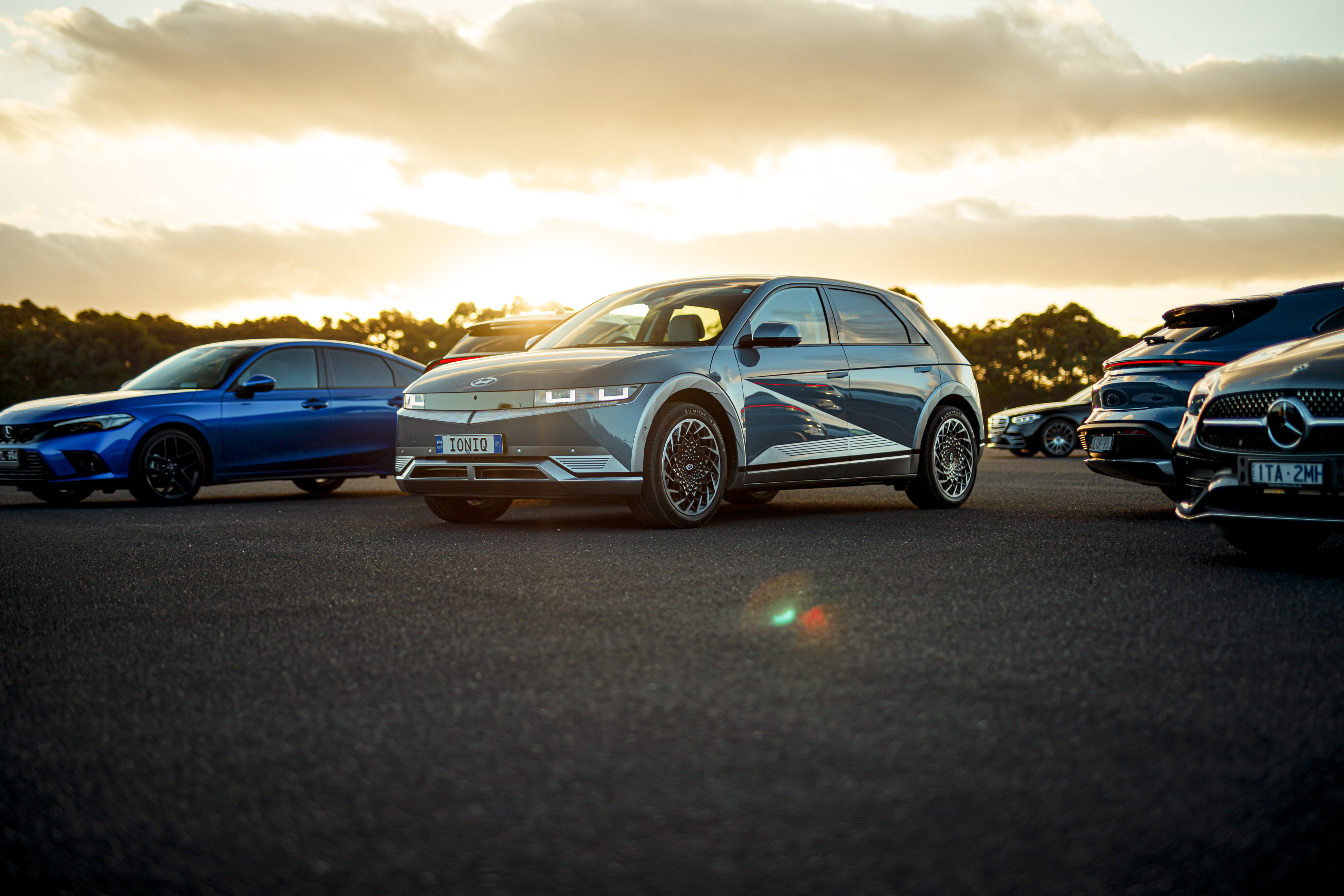
‘Electric vehicles are too expensive.’
Price remains the key barrier to EV adoption, but look a little deeper and not all models are more expensive than their traditional petrol-powered equivalents.
Snapshot
- EVs are generally pricier than traditional petrol or diesel vehicles
- But, a growing number of Chinese-made EVs are on par or even cheaper
- EVs are cheaper to own in the long-run, too
EVs generally carry a higher upfront price tag than traditional internal combustion engine petrol and diesel vehicle models – primarily due to large battery packs that contain resource-limited raw materials.
But, as new car prices, regardless of the powertrain, continue to climb with every generation, refresh or every year, how much more expensive are EVs today (if at all)?

JUMP AHEAD
- 🧱What's an affordable EV?
- 💸DEPRECIATION: EVs v ICE cars
- 🤔Will EVs ever be cheaper than ICE cars?
- 🚘COMPARED
👨💻TL;DR: So, are EVs really expensive?
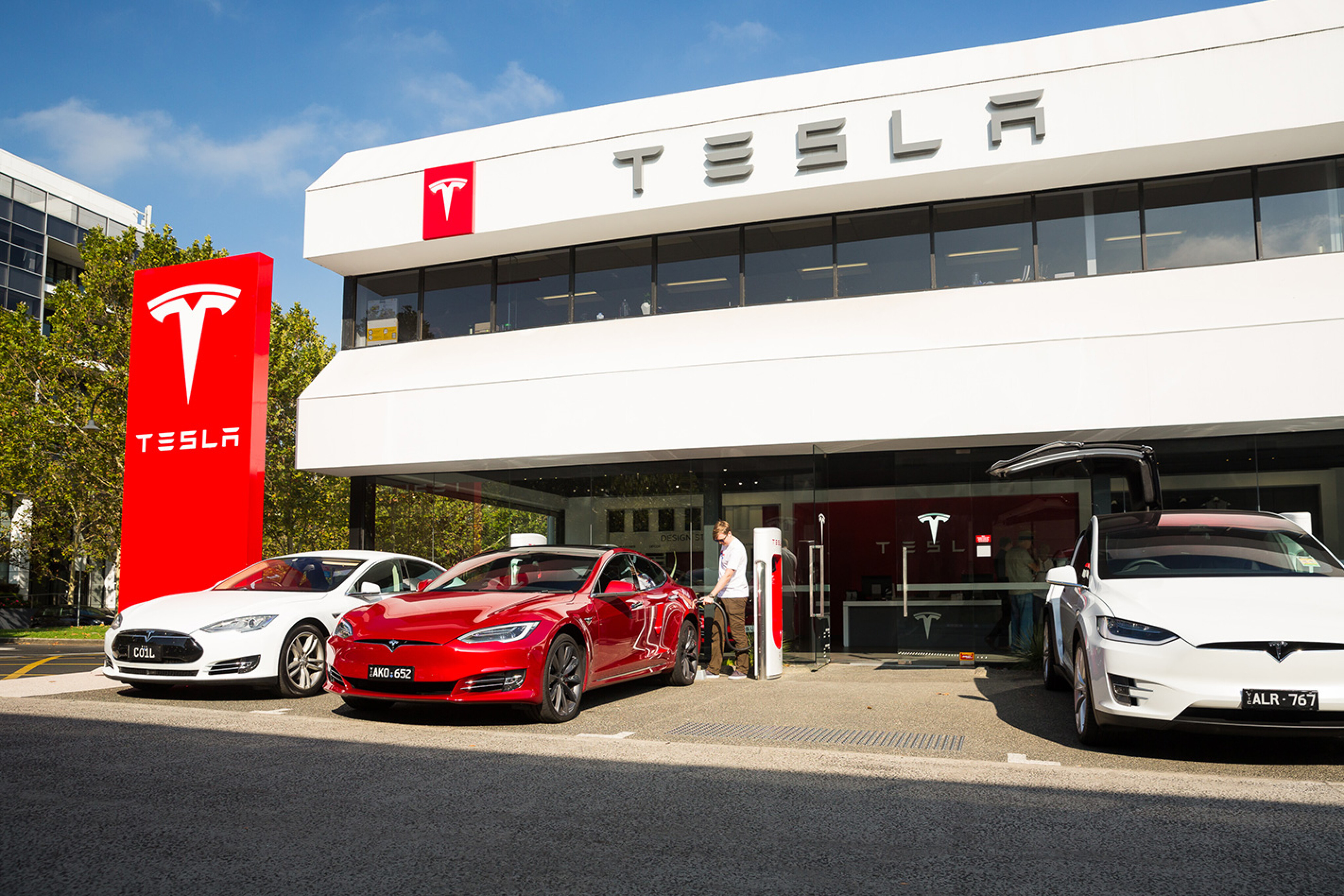
🧱The electric price barrier
According to a study of 506 Australian motorists, almost 70 per cent see the purchase price of electric cars as the main barrier to adoption.
Further, the survey suggested 13 per cent would be willing to buy an EV – if it was priced below $55,000 drive-away. At the time of publication, only a handful of EVs fit that budget: the BYD Dolphin, Atto 3, MG 4, ZS EV, GWM Ora, Fiat 500e, and Nissan Leaf.
| Reason for not purchasing an EV | Percentage of population |
|---|---|
| Purchase price | 66.6% |
| Battery life/replacement costs | 58.1% |
| Charging times | 52% |
| Driving range | 47% |
| Charging price | 42.3% |
| Understanding of technology | 28.9% |
Study carried out by insurer Compare the Market [↗] in March 2022. Wheels Media has no relationship with this business. More on survey data validity: How are survey sample sizes determined? [↗].
Some states have also introduced incentives and limited rebates for purchasing a pure-electric car under a certain price threshold to further lower the price barrier, with Queensland currently leading the charge.
Yet, EV taxes will eventually be introduced in some states from 2027 (or when EVs have a larger market share). In a contentious move, Victoria already charges owners by how far they drive annually since mid-2021.
Additionally, fears of a short-life battery have proven untrue from real-world data. Replacing individual battery cells – the most common approach – is also cheaper than maintaining an entire combustion engine.
However, it’s worth noting that insurance premiums are currently higher due to the burgeoning EV repair market.
Electric car servicing is also another long-term purchasing factor, alongside depreciation – and it varies depending on the model.
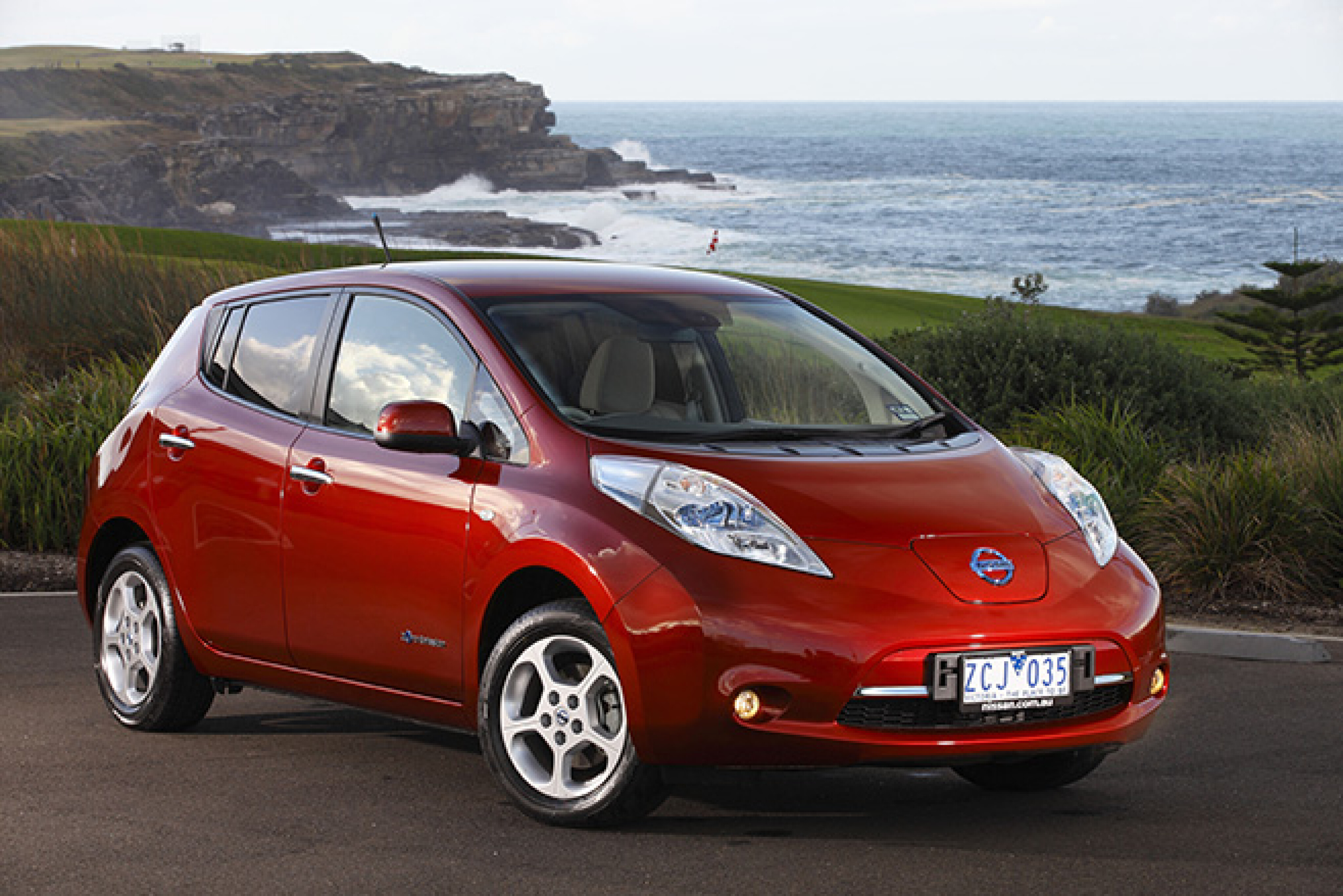
💸How does EV depreciation compare to combustion-powered cars?
According to Redbook data, most used electric vehicle models depreciate quicker than comparable petrol- or diesel-powered models.
| EV model | Minimum trade-in depreciation | ICE model | Minimum trade-in depreciation |
|---|---|---|---|
| 2012 Nissan Leaf | - 85% | 2012 Hyundai i30 Premium (petrol auto) | - 68% |
| 2016 Tesla Model S 75 | - 53% | 2016 BMW 520d Luxury Line | - 70% |
| 2018 Hyundai Kona Electric Highlander | - 38% | 2018 Hyundai Kona Highlander (FWD) | - 34% |
| 2019 Tesla Model 3 Standard Range Plus | - 45% | 2019 Mercedes-Benz C200 | - 39% |
Redbook tends to give more conservative depreciation estimates and serve as a rough guide only. The figures above represent trading in a vehicle at a dealer, so selling privately will likely fare better. Residual values fluctuate depending on the market.
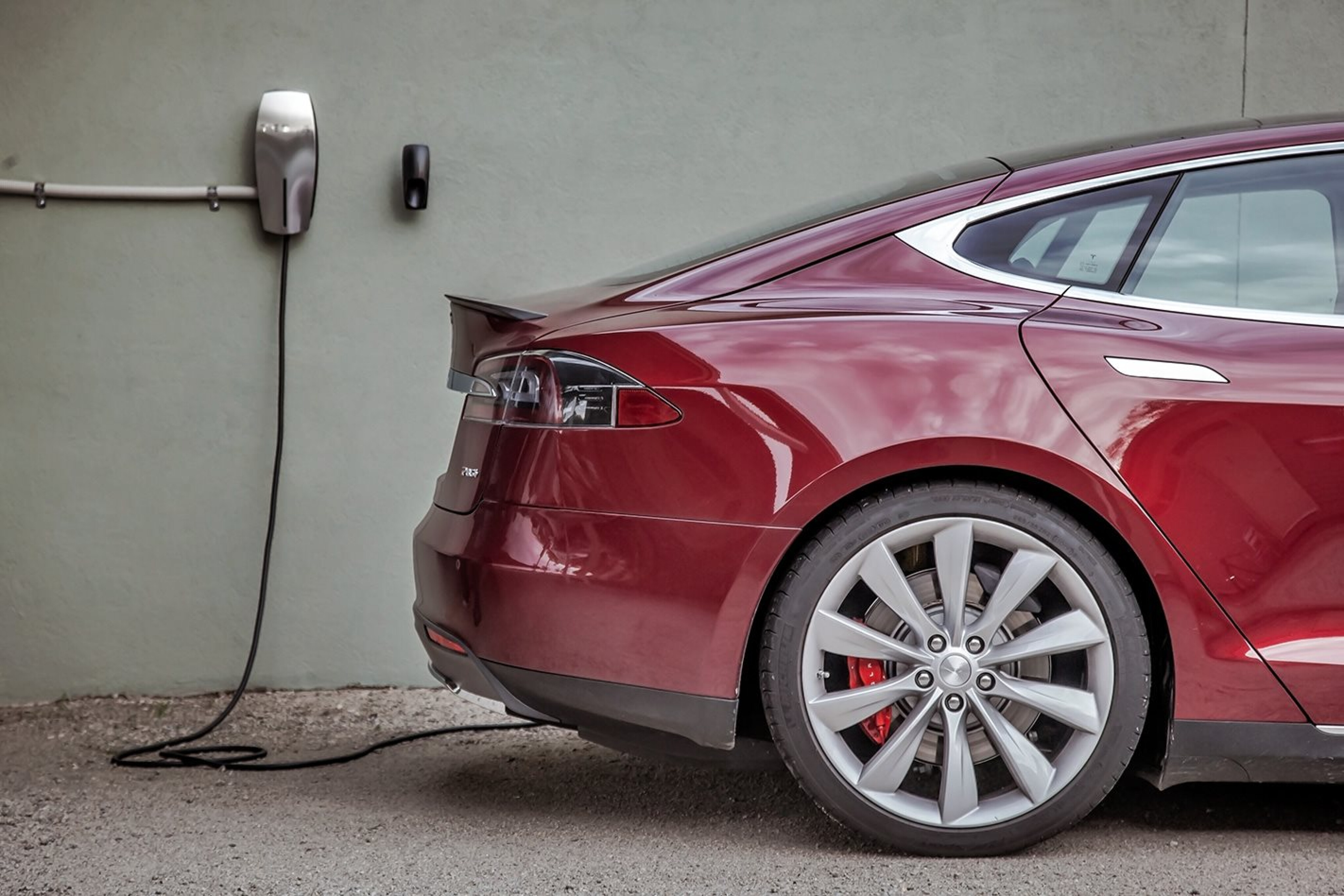
What does this all mean?
EVs are generally more expensive to buy new and are still a developing technology, which contributes to higher depreciation rates.
This especially holds true for original Nissan Leafs, which have old-hat battery tech and no active thermal management systems.
On the other hand, combustion-engined cars – especially diesel – are falling out of favour. Almost every car brand has committed to only sell zero exhaust emission electric cars in the coming years to comply with emissions, fuel economy and noise mandates globally.
As a result, the future of petrol and diesel cars look bleak, and is starting to be seen as outdated technology (if not already since Volkswagen’s infamous Dieselgate scandal). The depreciation value tables could likely soon turn in favour of EVs.
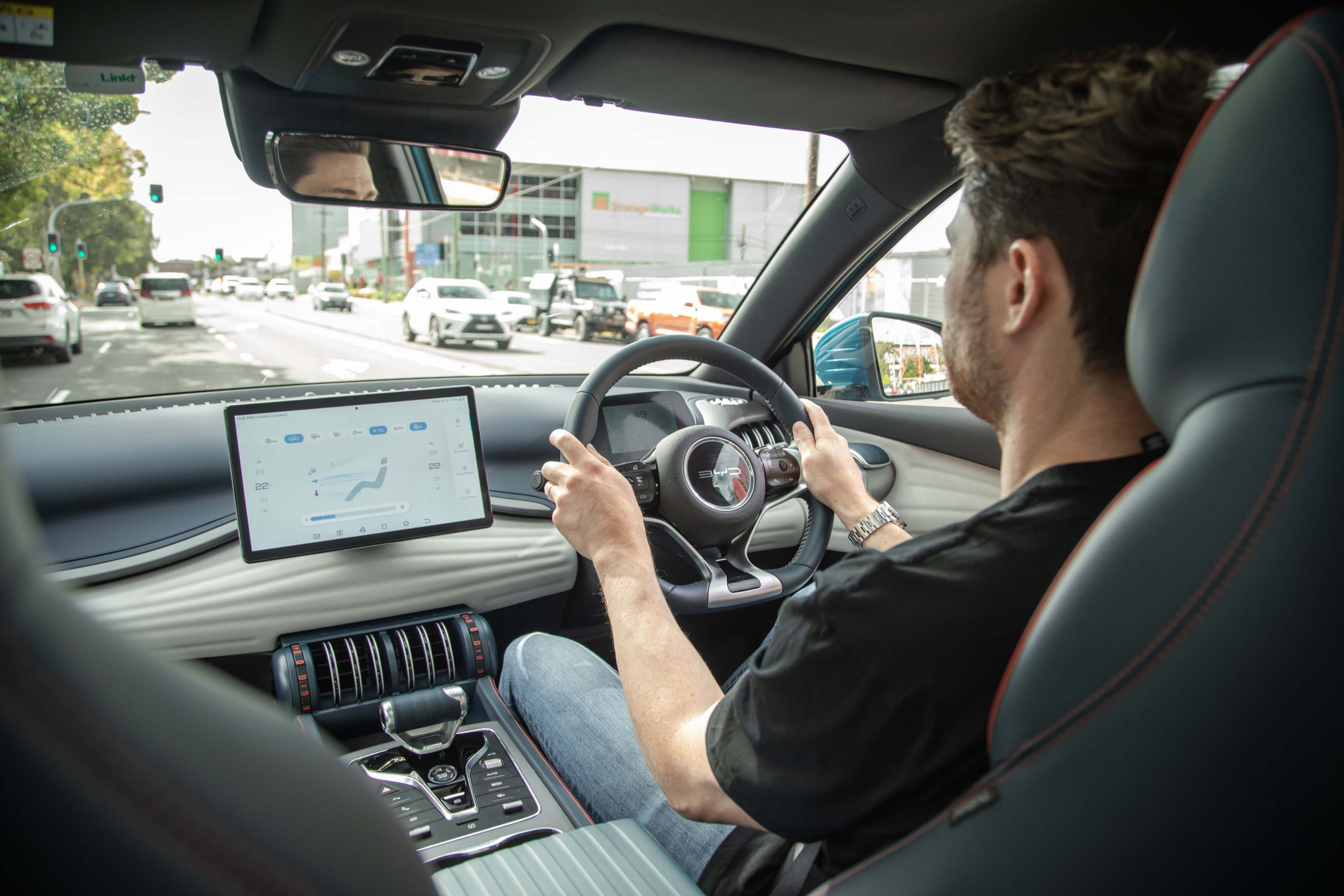
🤔Will EVs ever be cheaper than combustion-powered cars?
Yes, and some electric models have already achieved price parity with petrol and diesel-engined vehicles today. Australians can now make the electric switch for less than $40,000.
As detailed below, recent new made-in-China EV entrants already wear price tags on par – if not cheaper – than comparable petrol-powered models, such as the BYD Dolphin, Atto 3, MG 4, GWM Ora, and Tesla Model 3.
However, it doesn't necessarily apply to all Chinese-made EV models, with the Volvo XC40 Recharge SUV, LDV eT60 ute, and eDeliver 9 delivery van still demanding a wider price premium compared to combustion-engined equivalents.
Combined with price hikes for traditional combustion-engined models as they grow standard equipment and size with every new update or generation (or occasionally creeping up costs without substantial model changes), the EV price premium isn’t as wide anymore – if at all depending on what model you look at.
Why are made-in-China EVs more affordable?
Chinese-made EVs benefit from cheaper labour costs and a local supply chain of vehicle parts – including critical large and expensive battery packs – to drive down manufacturing costs and ultimately the price tag for buyers.
Many Western car brands have established factories in China, including Tesla, Volvo and Polestar (under Chinese owner Geely), and BMW and Mini, whereas the Volkswagen Group plans to establish vertically-integrated EV production in Spain.

Unfortunately, most EVs (those that aren't Chinese-made) have a higher sticker price, since Australia tends to receive more feature-rich models, with larger batteries, than other countries.
Car brands often argue it’s because buyers here demand more standard equipment and greater driving range.
Some automakers have boasted that their incoming EVs have a price point similar to the higher-spec variants in their combustion-engined lines, while most insist that little can be done until governments prioritise the issue with strict emissions targets.
However, while EVs are generally more expensive to buy than an internal combustion engine model, advocates focus on lifetime ownership costs when comparing EVs to 'ICE' cars.
EVs theoretically have lower running costs due to more affordable electricity for charging, better efficiency, and generally cheaper or less demanding servicing schedules. This all contributes to offsetting the extra price premium over time, as owners drive further.
New battery developments, gradually decreasing material costs, and increased competition in the market – which will soon be propelled by landmark carbon emissions reduction targets – will mean the tables will, again, turn in favour of more EV models being more accessible.
For now, let’s compare how much more expensive (or not) EVs are in 2023.
MG 4
| Model | Price | Difference |
|---|---|---|
| MG 4 51kWh Excite | $38,990 | |
| Toyota Corolla ZR Hybrid hatch | $38,120 | - 2.2% |
| Hyundai i30 N Line Premium hatch | $37,300 | - 4.3% |
The MG 4 is the Chinese automaker’s cheapest electric car that’s priced closely with a top-spec Toyota Corolla ZR Hybrid and Hyundai i30 N Line Premium.
Moreover, range-topping Mazda 3, Volkswagen Golf, Honda Civic, and Peugeot 308 small cars have now even bumped to costing beyond $40,000 – or borderline $50,000 to compete with the luxury badges.
However, it’s worth noting the MG 4’s base Excite variant misses out on some features, such as blind-spot and rear cross-traffic alert, synthetic leather seats, and electric folding wing mirrors.
The Hyundai i30 N Line Premium also omits the former radar-based safety assistance features as well, due to its sporty rear bumper.
Meanwhile, the BYD Dolphin electric hatch is priced similarly (from $38,890 before on-road costs) and offers all features as standard, but has a less powerful drivetrain than the MG 4.

BYD Atto 3
| Model | Price | Difference |
|---|---|---|
| BYD Atto 3 Standard Range | $48,011 | |
| Toyota Corolla Cross Atmos Hybrid 2WD | $46,050 | - 4.1% |
| Mazda CX-30 G25 Astina FWD | $43,310 | - 9.8% |
The top-selling BYD Atto 3 electric SUV wears a starting price within thousands from a flagship Toyota Corolla Cross Hybrid and Mazda CX-30.
It’s a similar story with the hero variants of models, including the; GWM Haval Jolion Hybrid, Hyundai Kona, Kia Seltos, Subaru Crosstrek, Mitsubishi Eclipse Cross, Honda HR-V hybrid, Volkswagen T-Roc, and Skoda Kamiq.
These are all small SUVs that have grown in price to the $40,000 to $50,000 bracket – and some of which have also grown in size – to be in line with medium-sized SUVs, not to mention the Atto 3 EV.

Tesla Model 3
| Model | Price | Difference |
|---|---|---|
| Tesla Model 3 RWD | $57,400 | |
| Mercedes-Benz C200 | $81,700 | + 42.3% |
| BMW 3 Series 320i | $78,900 | + 37.5% |
The popular Tesla Model 3 electric sedan has gone down in price since its 2019 launch – and is now around $20,000 cheaper than the base Mercedes-Benz C-Class and BMW 3 Series.
That’s because the latest fifth-generation W206 Mercedes-Benz C-Class is nearly $15,000 more expensive than its predecessor, though the German marque counteracted the price spike with more standard equipment.
Similarly, the BMW 3 Series sedan now costs $5400 dearer compared to its predecessor after a recent facelift.
The reduced, albeit periodically fluctuating, Tesla prices and increased costs for buying a petrol-powered mid-sized German luxury sedan has meant the price gap has dramatically widened in just the past few years.
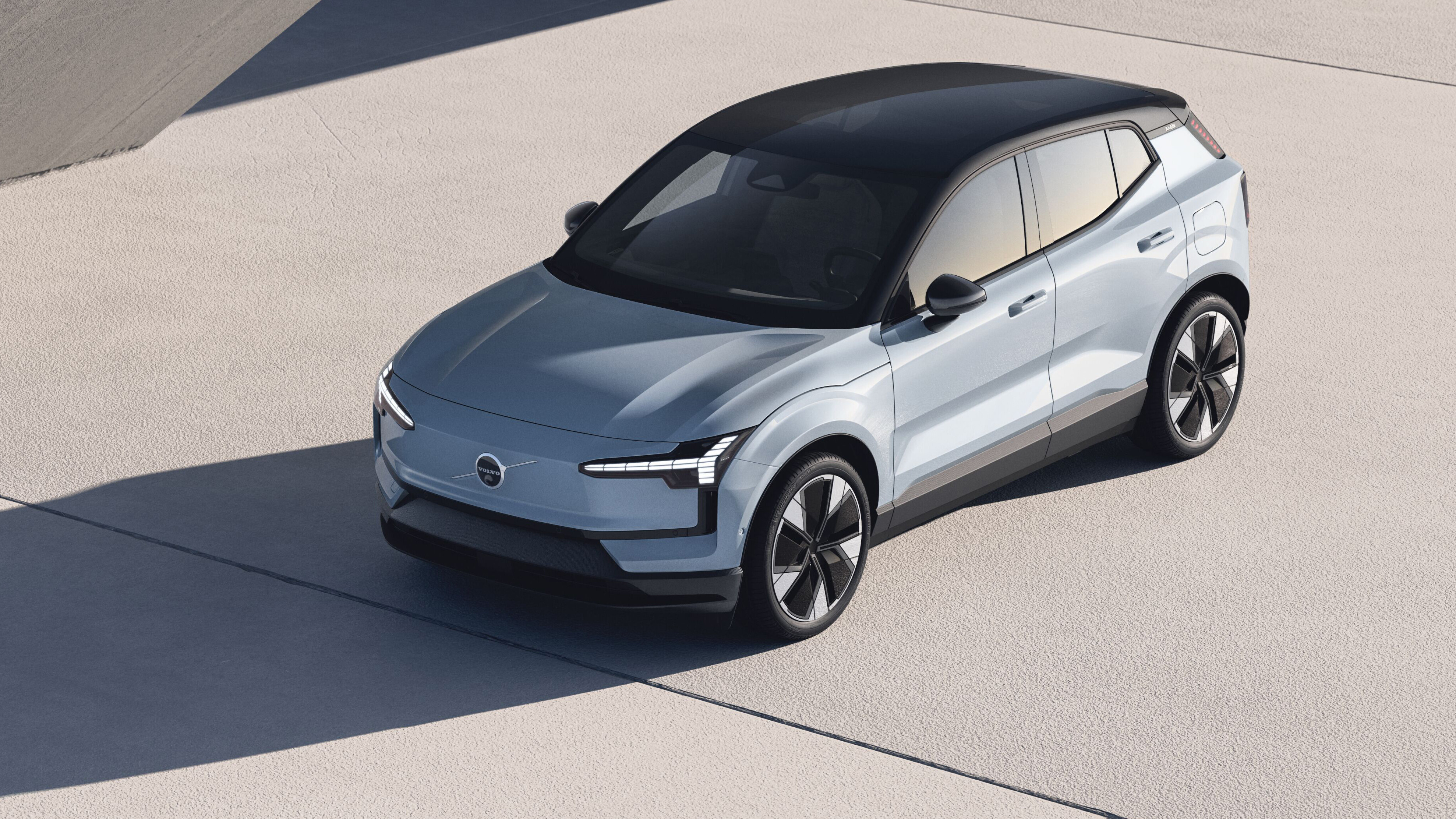
Volvo EX30
| Model | Price | Difference |
|---|---|---|
| Volvo EX30 Single Motor Extended Plus | $59,990 | |
| BMW X1 sDrive18i xLine | $60,400 | + 0.7% |
| Mercedes-Benz GLA 200 | $63,200 | + 5.4% |
The Volvo EX30 small electric SUV is the Sino-Swedish brand’s latest entry-level offering, with a price tag less than the base petrol-engined BMW X1 and Mercedes-Benz GLA.
However, it’s worth noting the slightly bigger Audi Q3 and Volvo XC40 SUVs do start around $10,000 lower than the EX30.
Unlike other luxury carmakers, the fastest-ever Volvo comes with most features as standard – foregoing pricey option packs or subscriptions as in the case of the BMW X1 (for now).
Also notable is that both premium small SUVs can be had in full-electric versions – the BMW iX1 (from $84,900 before on-roads) and Mercedes EQA (from $82,300 before on-roads). Both are made in Germany and carry a sizable price premium, as opposed to the Chinese-made Volvo EX30.
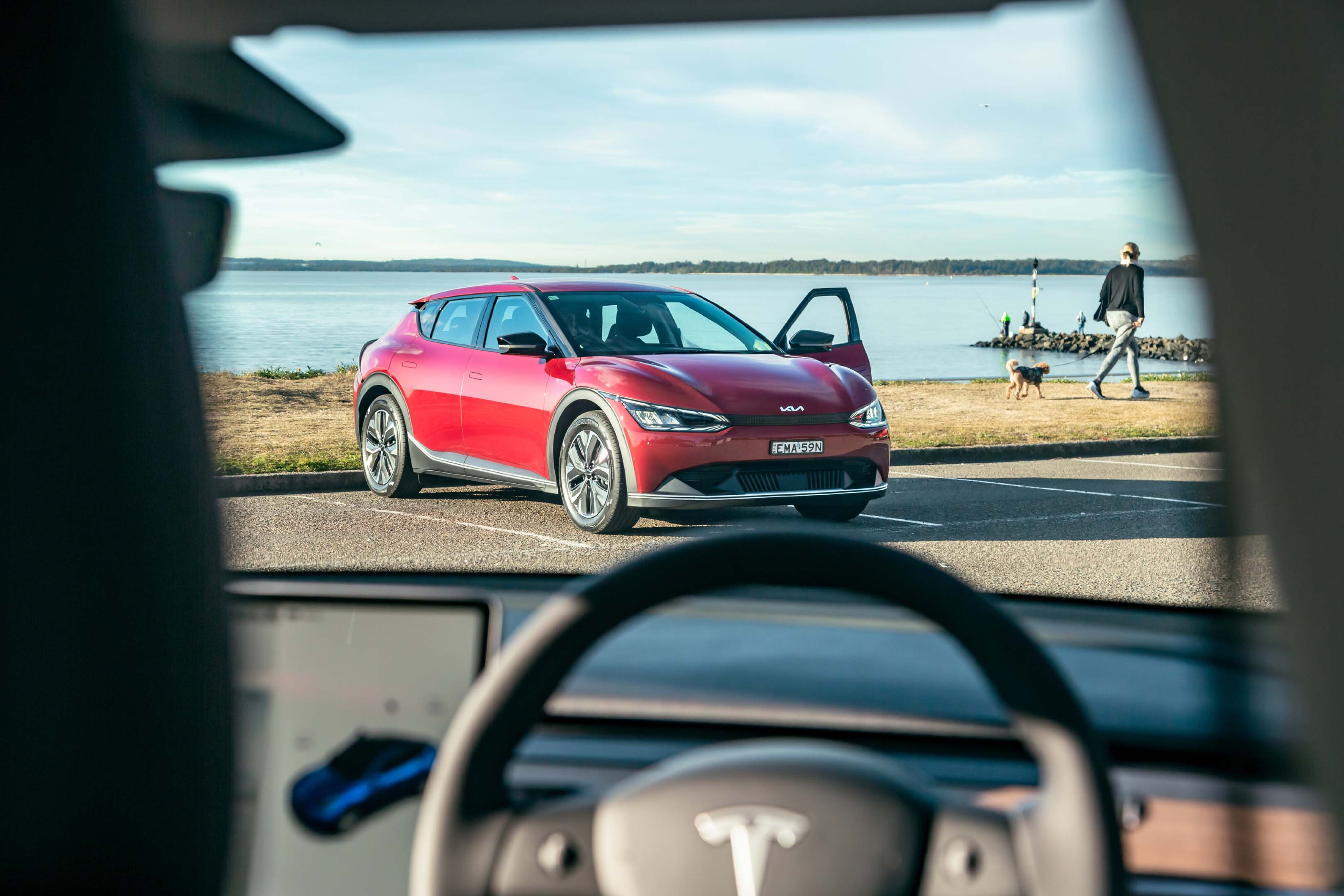
Kia EV6
| Model | Price | Difference |
|---|---|---|
| Kia EV6 Air | $72,590 | |
| Kia Sportage SX+ FWD (2.0L petrol auto) | $41,850 | - 42.3% |
| Toyota RAV4 GXL Hybrid 2WD | $44,100 | - 39.2% |
The Kia EV6 crossover highlights where the manufacturing costs and margins of non-Chinese made electric vehicles begin to merge.
The base EV6 Air trim has the widest price gap compared to its petrol counterparts in this story, costing almost double the Kia Sportage SX+ with similar equipment levels. It's also dearer than the popular Toyota RAV4 GXL Hybrid.
Why the price premium? As described above, the Kia EV is made in South Korea, so it doesn’t have the advantage of China’s cheaper overall manufacturing costs to drive the price tag down for buyers.

🧑💻How much more expensive are EVs really?
With increasing new car prices and more budget-friendly Chinese-made EV options, the premium for some electric car models isn't as drastic anymore (if at all) compared to petrol- or diesel-engined models.
However, the upfront purchase price is just one part of the story – often forgotten when 'sticker shock' is so pervasive. The long-term total cost of ownership is a key factor to consider as well.
Currently, the running costs and maintenance expenses favour EVs, even when charged on more expensive public charging infrastructure.
But if you can charge at home (the ideal method) and take advantage of solar energy, then running costs can be dramatically slashed. Petrol cars simply can't offer this advantage.
Of course, the longer you own and the further you drive an EV, the quicker you’ll recoup the extra price premium (if there is one).
Despite the price tag barrier, increased market competition – pushed by strong government policies – and gradually decreasing battery costs mean electric cars are quickly becoming more accessible in Australia.
More EV stories to help you choose the best car for your needs
🚘 EV news, reviews, advice & guides
- ❓ Short & sweet: Your EV questions answered
- ⚡ New EVs: Everything coming to Australia
- 🥇 Australia's EVs with the longest driving range
- ⚖️ Best-value EVs by driving range
- 💰 How much do EVs cost in Australia?
- 😰 How much more expensive are EVs?
- ⚖️ Number crunching: Is it time to switch to an EV?
- ♻ Should you buy a used EV?
- 🛡️ Are EVs more expensive to insure?
- 🆚 Costs compared: Charging an EV vs fueling a car
- 📖 EV charging guide
- 🚧 Are there enough EV chargers in Oz?
- 👨🔧 EV servicing explained
- 🔋 EV battery types explained
- 🪫 When do EV batteries need replacing?
- 🆚 Hydrogen v EVs: What's best for Oz?
- 🌏 How sustainable are EVs, really?
COMMENTS